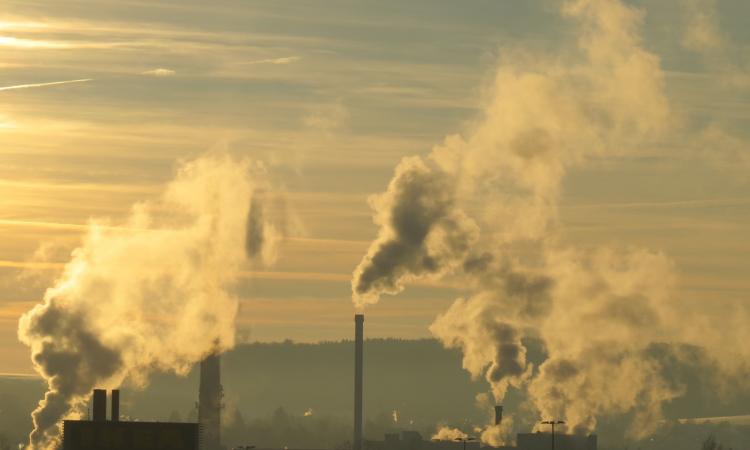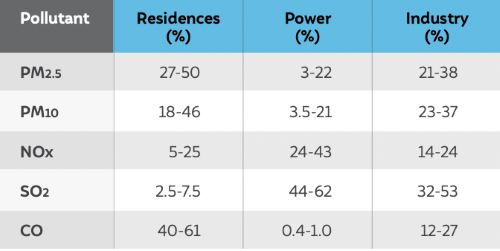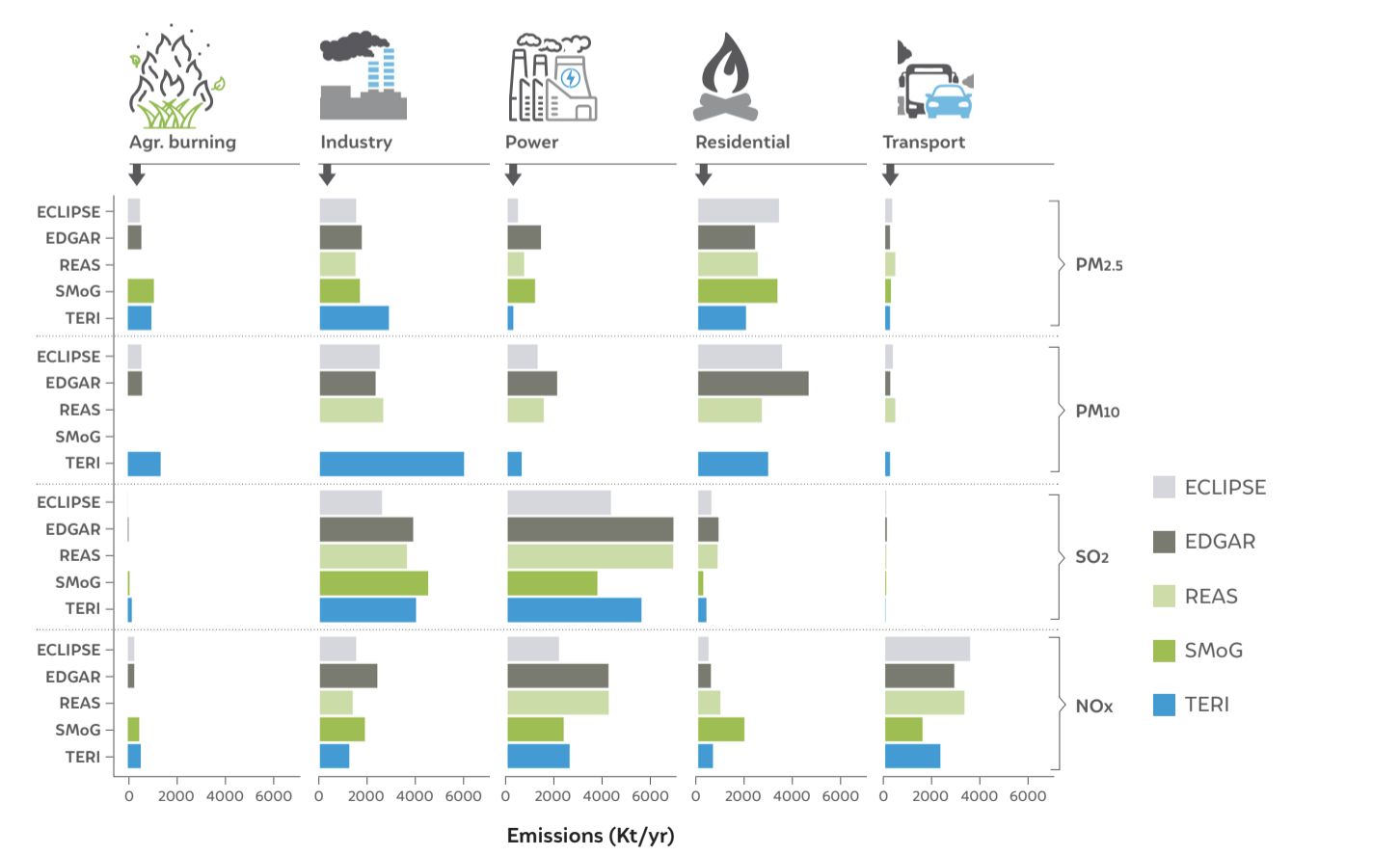
India needs to develop and maintain a comprehensive inventory of baseline emissions to ascertain whether its policy and technological interventions are able to reduce air pollution, according to an independent study released recently by the Council on Energy, Environment and Water (CEEW).
The study titled ‘What’s polluting India’s air’ does a comparative analysis of existing high-resolution inventories, and finds that existing estimates for India’s emissions vary by up to 37 per cent for the pollutants considered - particulate matter (PM2.5 and PM10), Nitrogen oxide (NOx), Sulphur dioxide (SO2) and Carbon Monoxide (CO). The study also found significant variations in sectoral estimates.
The CEEW study considered emissions from industries, power plants, road transport, domestic sources, and agricultural waste burning, which account for approximately 95 per cent of all the criteria pollutant load emitted.
This study reviews and compares five databases that provide emission estimates for air pollutants in India. It compared pollutants - PM2.5, PM10, NOx, SO2, and CO - from three global emissions databases - Emissions Database for Global Atmospheric Research (EDGARv5), Regional Emissions Inventory in Asia (REASv3.2), Evaluating the Climate and Air Quality Impacts of Short-lived Pollutants (ECLIPSEv6b) - and two domestic ones – Speciated Multipollutant Generator (SMoGv1) and The Energy and Resources Institute (2016).
The five inventories analysed in this study vary significantly in both sectoral estimates and sectoral contributions. While these variations do not affect our ability to execute action, it increases the uncertainty in assessing the impact of these interventions. For instance, household emissions, which is seen to be the leading contributor of PM2.5 across the five inventories, ranges from 27 to 50 per cent of India’s total PM2.5 emissions.
The power sector was found to be the leading source - around 44 per cent to 62 per cent - of SO2 emissions. Most of the above-mentioned estimates also point to the power sector as the leading emitter of NOx, but according to ECLIPSE the transport sector is the leading emitter.
Power plants and industries appear to be among the leading emitters for multiple pollutants, including SO2 and NOx. SO2 and NOx react in the atmosphere to form secondary particulate matter, thereby increasing ambient particulate concentration.
The NCAP acknowledges the need for a national emission inventory for “tracking progress towards emission reduction targets and as inputs to air quality models.” The NCAP had set the timeline for the creation of a National Emission Inventory as 2020. But, India is yet to formalise one.
Sectoral contributions to emissions vary significantly


Recommendations
“To meet the NCAP target of 20 - 30 per cent reduction in particulate concentration by 2024, we need to estimate emission reductions needed across sectors. Estimating these reductions will only be possible when we have an official, representative emission inventory for India. Our study finds that industries and power contribute significantly to multiple pollutants like PM2.5, SO2 and NOx. Policymakers should focus on reducing emissions from these two sources, on a priority basis,” says Tanushree Ganguly, Programme Lead, CEEW and lead author of the study.
The study highlights that Uttar Pradesh is the leading emitter of PM2.5 due to the usage of solid fuels in households. It is closely followed by others like Maharashtra, Madhya Pradesh, Gujarat, and Odisha as the highest emitters of PM2.5, albeit with high variations.
Karthik Ganesan, Fellow and Director - Research Coordination, CEEW, said: “As a start, India should create a comprehensive and consistent energy balance at a country and state level to account for use of energy use across sectors - formal and informal. This is the main input to the process of creating the emissions database.”
There is a need to conduct periodic primary surveys to collect data from residential and informal sectors. Household energy use in India continues to be a significant source of PM2.5, but the latest available information on household primary cooking fuel usage is from 2011.
“Efficient and periodic collection of data from rural households, industry, MSMEs, and other parts of our informal economy is necessary to better understand their contribution to pollution in a particular region. Equally, scientific institutes must prioritise the creation of emissions factors that represent local conditions, technologies and maintenance practices,” says Ganesan.
The study recommended that developing a national emissions database would require consistency in the methods and data sources that will be adopted to calculate annual increase or decrease in emissions. Government departments need to collaborate with each other for updating the emissions estimates periodically.
Such an emissions inventory is key to help model the dynamic nature of pollution sources and their impact on various areas and assess the implications of new policies and regulations to curtail emissions from specific sources.
Assess the representativeness of existing estimates, given the wide variation in emission estimates for the same geography. The NKN can play a critical role in identifying ways in which these inventories could be improved/upgraded to reflect India’s emission scenario.
The Central Pollution Control Board should collaborate with National Knowledge Network (NKN) to develop a comprehensive emissions factor database, which will comprise sector- and region-specific emission factors i.e. the quantity of a pollutant being released into the air from a particular activity.
The availability of information required for computing emissions varies from sector to sector and region to region. To address data gaps and ensure consistency in availability of data, government departments should formulate protocols for reporting about polluting entities that fall under their jurisdiction.
The study can be accessed here. The dataset can be downloaded here.
Suggested citation: Ganguly, Tanushree, Adeel Khan and Karthik Ganesan. 2021. What is Polluting India’s Air? The Need for an Official Air Pollution Emissions Database. New Delhi: Council on Energy, Environment and Water.